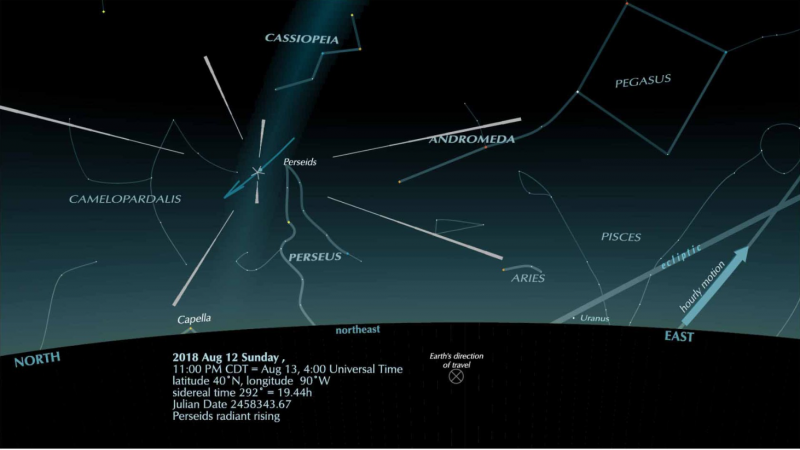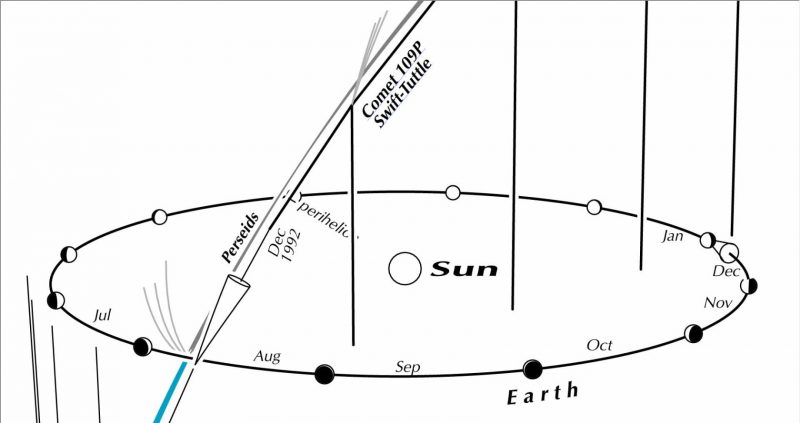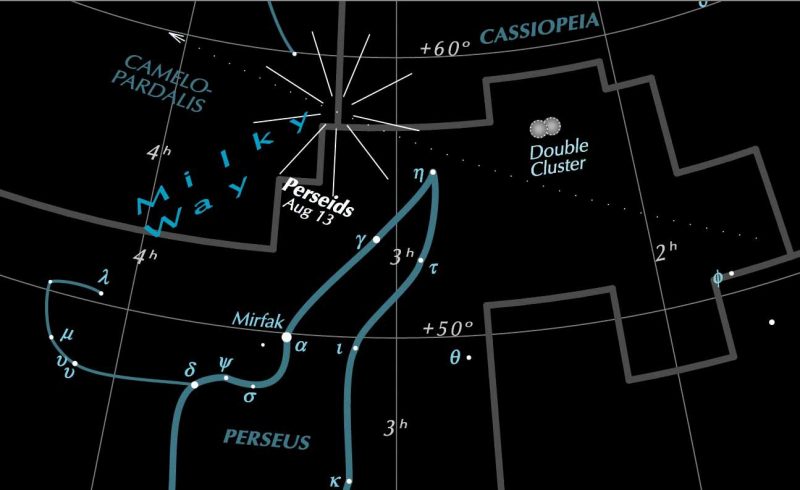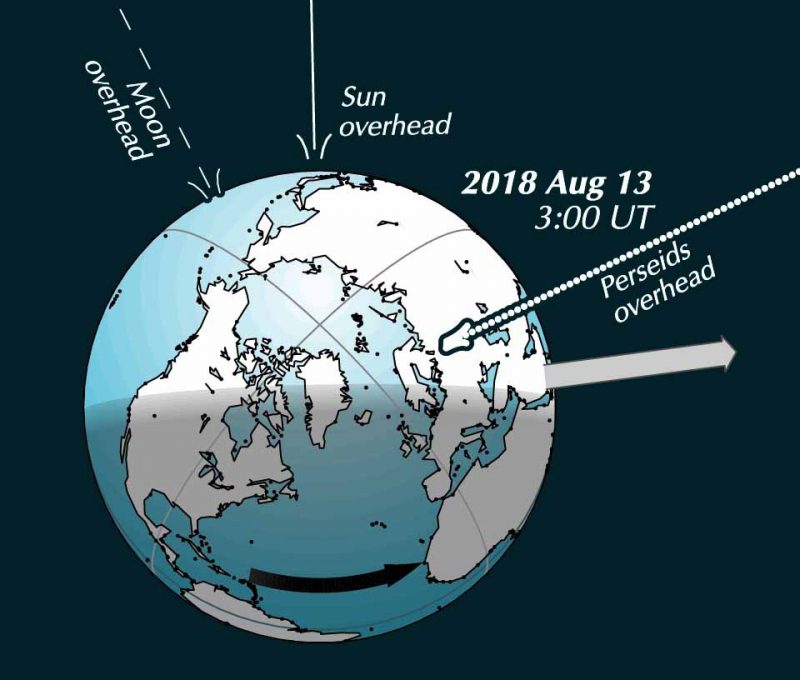In honor of this weekend’s meteor shower: EarthSky meteor shower stuff is 15% OFF! Shop here!

Originally published at Guy Ottewell’s blog, and reprinted here with permission.
This is an early notice: the best showing of the 2018 Perseid meteors should be in the night between August 12 and 13 (Sunday-Monday), but you may already have a chance to see a few of them.
They are members of a vast diffuse stream in space, millions of miles wide. That is why outliers can pass by Earth as early as the middle of July, and a few may continue till near the end of August. It is their peak, the densest part of the stream, through which we will pass in the night of August 12/13.
The scene shown is in the earlier part of that night, and it’s not too different in earlier nights. But in no night are you really likely to see so many “shooting stars” simultaneously! Even in the core of the stream, the little bits of matter are thousands of miles apart.
The radiant, or point from which the meteors in their parallel courses appear to streak, is at first over the northeastern horizon, then swings higher as the sky rotates, and is highest in the pre-dawn hours; and it’s then that more meteors are likely to be seen.
The meteors (or meteoroids, as they are called when still out in space, before becoming visible by burning up in our atmosphere) are particles shed from Comet Swift-Tuttle, so they follow roughly in its orbit.

The comet was discovered in 1862 and has a period of about 130 years, so it has only once been seen since, in 1992. (But comets recorded from 69 B.C. and 188 and 1737 A.D. have been identified with it, leading to more accurate and fascinating information about its orbit.) It is a chunk of rock and ice 26 kilometers wide, and passes close to Earth’s orbit; it won’t hit us, though it will come within a million miles – an astronomical hairsbreadth – in 3044.
Because the orbit descends steeply from the north, the radiant point (or small area) is as far north as declination 48°, at the northern end of the constellation Perseus, near a wonderful deep-sky object, the Double Cluster of stars, between Perseus and Cassiopeia.

Actually, as with other meteor showers, the radiant’s position evolves over the years, and drifts eastward from day to day (as shown by the dots) during the shower’s duration, so that it is moving into another constellation, Camelopardalis, the Giraffe.
The Perseids have long been known as the most reliable of the year’s half-dozen major showers (though rivalled by the Geminids of December). And this year is favorable. Moonglare drowns all but the brightest meteors; but the sky is free of it, because the moon is new on August 11.

The globe picture shows Earth from the north of the ecliptic plane (the broad arrow is Earth’s travel in that plane in 3 minutes). As America rotates into night, it sees Perseids coming from low in the northeast; later, toward dawn, they are coming from high overhead.
The dotted line represents only a thread of the vast stream: meteors are coming from exactly overhead – at the moment depicted on the graphic above – in Russia.
The Perseids meet Earth from high ahead, so they are swift, needlng the atmosphere at 59 kilometers a second (132,000 miles per hour) – not as swift as the 71-km/sec (159,000-mph) Leonids of November, which meet us from almost level ahead.
Relaxing in a deck chair, gazing calmly half-upward, with peripheral attention all around, and noting streaks in any part of the sky that point away from the radiant – if they streak in other directions, they are sporadics, or Delta Aquariids, not Perseids – you may in the small hours of Monday be lucky enough to count 50 or even 100 in an hour. The Perseids’ estimated zenithal hourly rate is 110. But this means the number a single observer could record if the radiant is overhead (which it isn’t except for one place at a time at latitude 48° north) and if sky conditions are perfect.
Which, I hope for you, they will be.
Bottom line: A preview of the 2018 Perseid meteor shower, from Guy Ottewell.
Looking for a dark area to observe from? Check out EarthSky’s interactive, worldwide Best Places to Stargaze map.











